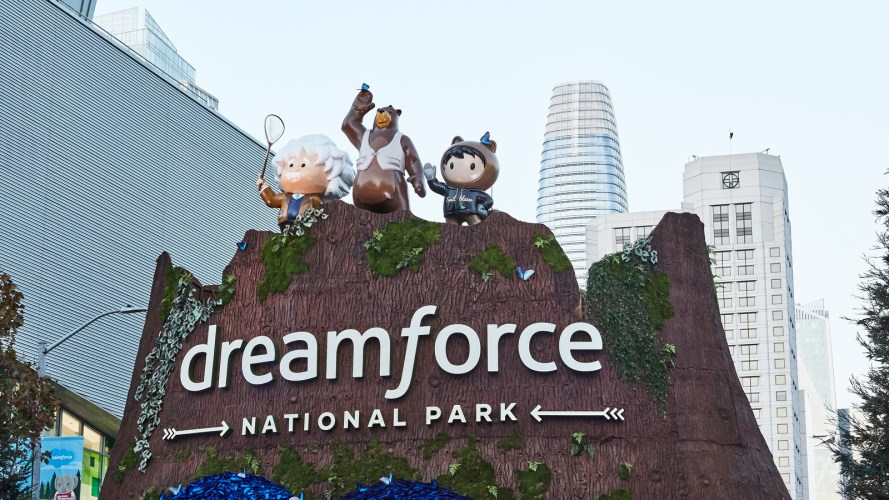This is an exciting time for retail. Over the last 20 years, shopping has evolved to a point where digital is in every interaction, creating incredible opportunities to drive consumer engagement that is personalized, seamless, and convenient.
Retailers have worked hard amid this disruption to transform business, operating and engagement models. They’re no longer sitting back and waiting for transactions — they’re pushing their brands to consumers. But key challenges remain as third-party platforms and rising expectations continue to impact how they build relationships.
At Dreamforce 2019, we dug into these challenges to uncover ways to redefine engagement, reskill employees, and save retail once and for all.
1. Become people-centric
Change is paramount. Retailers that trade the “stack them high, let ’em fly” mentality for personalized experiences and services are creating closer connections with customers. To do this, retailers must move from product-centric to people-centric.
From reach to relationships
Evolve from one-to-many tactics to building sustainable, meaningful relationships through personalization.
From distribution to engagement
The mantra used to be “if you build it, they will come,” but engagement is increasingly happening on third-party platforms — seven different touchpoints on average. Smart speakers, for example, allow consumers to place an order just by saying so out loud. Meet them where they are.
Scale to agility
Scale gets retailers far but has left behind monolithic and closed applications. Adopt systems of agility to deploy solutions at the speed of ever-evolving customer expectations.
Payroll to careers
Empowered store associates are the backbone of brands. Shift away from payroll to fostering lifetime learning and career growth.
Brand to world
Consumers are rewarding brands that prioritize sustainability. Retailers today should think beyond their business to understand their impact on the world.
People — whether shoppers, employees, or partners — are the backbone of retail. Store associates, in particular, are the brand’s biggest ambassadors. Retailers can become truly people-centric by unleashing valuable data across marketing, commerce, and customer service to connect to every customer while engaging and empowering associates across touchpoints.

2. Create empathy at scale
The challenge for many retailers is having a deep understanding of their customers. Aggregating data into a single platform unleashes an actionable customer profile based on preferences and key behavioral information to deliver empathy at scale.
Technologies like AI analyze this data to drive highly contextual experiences that build customer lifetime value. For example, AI-powered insights eliminate the guesswork for marketers as they determine the messaging that will resonate with audiences and optimizes journeys based on predictive data and trends.
Empathy at scale also means extending a high level of service and redefining how to manage orders. Take Party City as an example. With more than 1,000 stores managed from Halloween through peak season, they deliver personalized engagements that ensure every customer has the perfect party. Inspiration might start on Pinterest, where integration with the Party City app surfaces relevant products powered by Salesforce Einstein. Once customers complete their purchase, a follow-up email lets them track orders and request additional assistance, if needed, within the same email. Customer service agents have the information they need to resolve cases quickly and focus on building relationships.

3. Create a platform for innovation
Retail leaders have one thing in common: empowered and enabled people. But this isn’t unique to a select few brands. Every retailer can and should create an environment conducive to innovation. Here are three areas to prioritize:
Connectivity
APIs syndicate customer, order, product, and inventory data across a myriad of touchpoints — both on and off property — to deliver omni-channel experiences. Because of this, team members spend less time on maintenance and more time on innovation.
Intelligence
AI boosts productivity by automating time-consuming activities, like answering common customer questions so care agents focus on more complex cases. AI can even suggest email copy to marketers for better personalization in less time.
Reskilled associates
Sixty percent of retailers think there’s a growing skill gap. Train associates the way they want to consume information and offer continued education to grow their careers. Trailhead, for example, is a powerful interactive learning program that takes a gamified approach using videos, points, and badges personalized to every employee.
One of the largest food retailers in the world, Ahold Delhaize, has an amazing culture of innovation and agility. With Salesforce Customer 360, they connected decades-old legacy systems, empowered store associates, and enhanced technological innovation to bring a cashierless ToGo store to market in just nine months and connect stores with the flip of a switch. Behind this innovation was an environment that enabled people to grow.

Bring it all together
The future of retail is largely defined by the connection brands create with their customers, employees, and partners. To learn more about how redefining engagement and reskilling employees will save retail, watch the Retail Keynote.




























